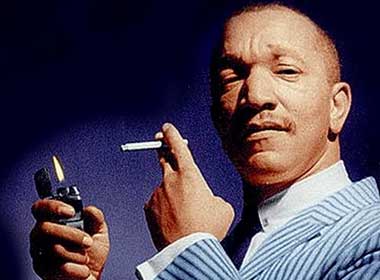
Everything is interconnected. For example, without the music of yesterday, we wouldn’t have what we have today. Same with comedy.
However, many of the greats from the past are not seen much now, and younger people in so many instances do not even know who they are. Hence, this excursion through some of the laugh getters of different times.
One of the funniest was Jackie “Moms” Mabley, whose specialty was jokes about being pursued by very old and/or very unattractive men. In her dowdy attire, she would have her audiences in stitches, telling them about “another old man” trying to hit on her.
To drive the point home, she said he was “older the other one — older than his birthday. And uglyyyyy! Honest to goodness he was so ugly he hurt my feelings.”
BEFORE HE was an activist, had begun his well-publicized protest fasts, and before becoming a pitchman for the Bahamian Diet, Dick Gregory was a favorite on the stand-up comedy circuit.
His jokes were funny, but they often took stabs at racism, which was more blatant than it is now. When they finally do have a Black astronaut, quipped Gregory, they will “send him to the sun!”
Godfrey Cambridge found success around the same time in the 1960s that Bill Cosby was on his way to becoming the megastar and legend he is today.
Often his jokes were colorblind, but he would also edge into other territory, such as noting that when a cab did pick up a Black man, he would automatically take him to Harlem. “But I don’t live in Harlem!” passenger would explain to the surprised cabby.
Cambridge appeared in a series of popular movies during the so-called “blaxploitation” era, including “Cotton Comes to Harlem” and “Come Back Charleston Blue.”
GEORGE KIRBY got his laughs primarily from his remarkable skills as an impressionist. He could do everyone from John Wayne, Bill Cosby and Walter Brennan to Nat “King” Cole, Louis Armstrong and even Pearl Bailey.
In his book, “Black Comedians on Black Comedy: How African-Americans Taught Us to Laugh,” Darryl Littleton wrote in reference to Kirby, “What the country needed (whether it knew it or not) was a Black comic that was completely removed from the old-time circuit.”
“Pigmeat” Markham (first name, Dewey) came along during the vaudeville era. In keeping with the times, he performed in blackface. That is, until public pressure resulted in that falling far out of favor on both sides of the color line.
Markham became best known for his “Here Comes the Judge” skits that were revived many years later on the hit TV show “Laugh-In.” There was also a successful record from Motown by Shorty Long, also titled “Here Comes the Judge.”
EDDIE “ROCHESTER” ANDERSON, with his gravelly voice, was famous for partnering with Jack Benny as a very funny valet, first on Benny’s radio show and then his TV program. As silly as it sounds today, Anderson was noted as “the only Black man in radio or motion pictures talking back to a White man.”
Anderson also starred with Ethel Waters and Lena Horne in the 1943 all-Black film “Cabin in the Sky.”
Nipsey Russell was best known for his witty poems and limericks. He preferred to think of himself as “a comic,” not a “Black comic.”
He found work as a regular on the widely watched television game shows “Hollywood Squares,” “Match Game” and “To Tell the Truth.” In addition, he played the Tin Man in “The Wiz,” also starring Diana Ross, Michael Jackson and Ted Ross (no relation).
ANYONE WHO ever watched “Sanford and Son” and thought that was the total picture of Redd Foxx is sorely mistaken. Long before that popular sitcom came along in the ’70s, Foxx was famous for his profanity-laced, sexually- charged nightclub club act and recordings.
Actually, despite being well advanced in years, and away from his feisty “Sanford” character, he was still that way. He told an audience at the Music Hall in Detroit upfront that anyone who was sensitive should head for the door because he was not going to hold back anything, and he certainly didn’t. It was hard to believe a senior citizen could talk so dirty, but that was Redd Foxx.
It is unfair for people to be so critical of the old “Amos ’n’ Andy” TV show because despite numerous stereotypes, it was very funny. And the actors and actresses were outstanding and should be recognized, including Tim Moore (George “Kingfish” Stevens), Spencer Williams (Andy Brown), Alvin Childress (Amos Jones), Ernestine Wade (Sapphire Stevens) and Amanda Randolph (Ramona Smith, Sapphire’s mother).
Black people have been subjected to things far more embarrassing than “Amos ’n’ Andy.”
As for the shuffling, dim-witted, frightened, “feet don’t fail me now” type characters played in movies by Mantan Moreland, Willie Best and Stepin’ Fetchit, among others, we don’t need to have that type of image in front of us now. However, they should not be condemned either.
Sinbad put it this way: “These brothers did what they had to do to survive and to be entertainers.”


